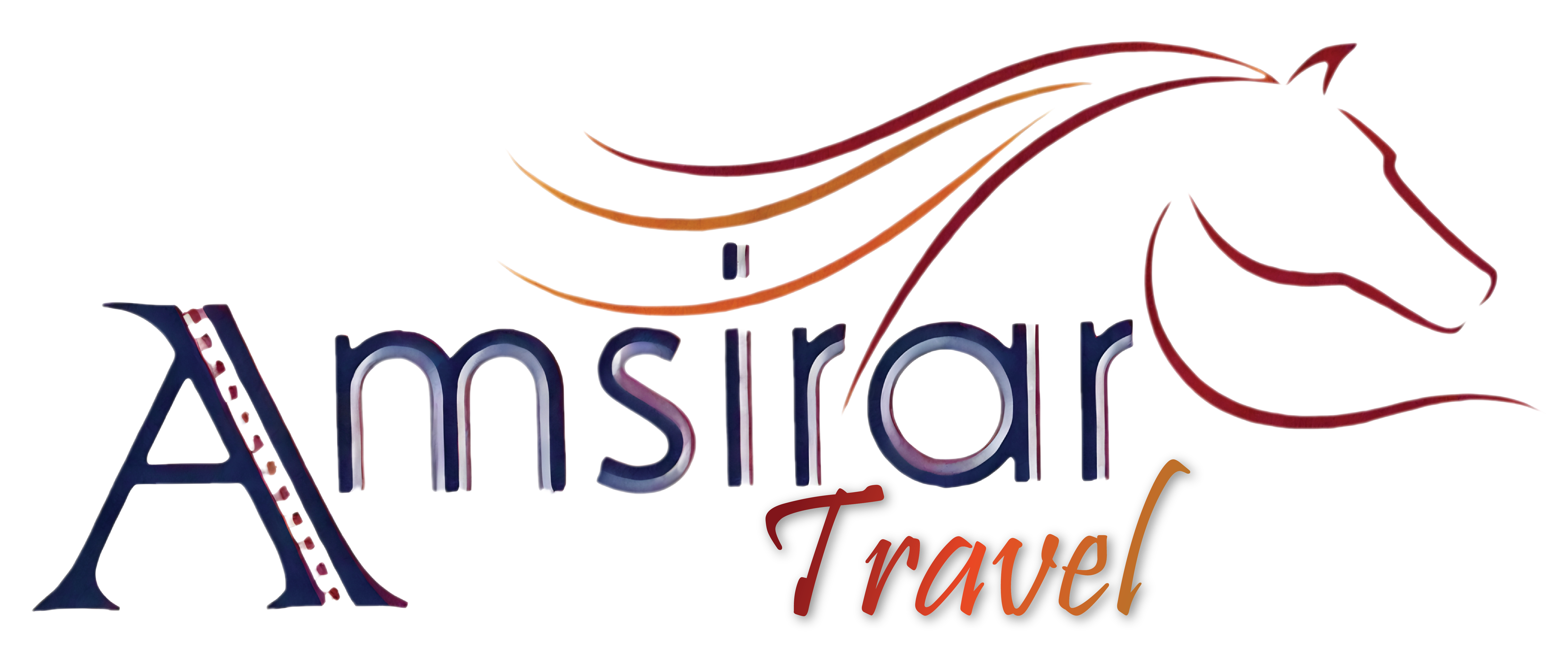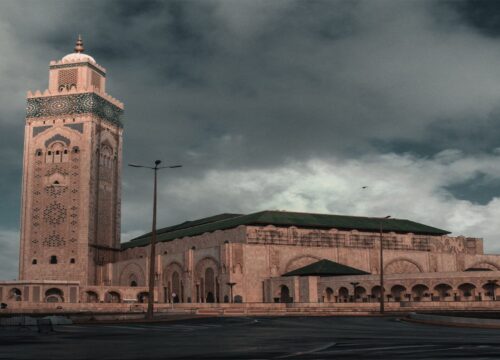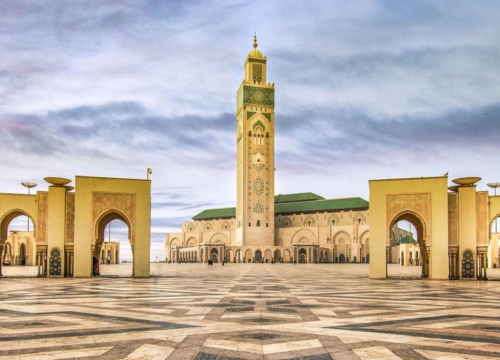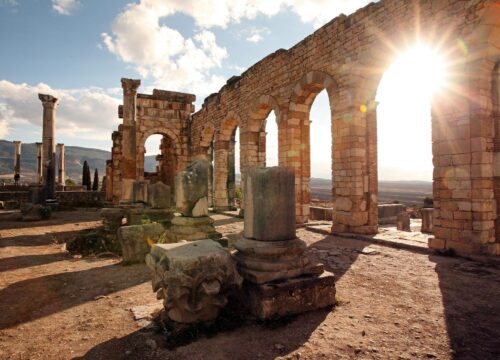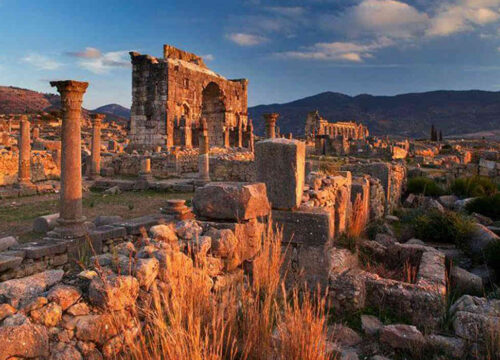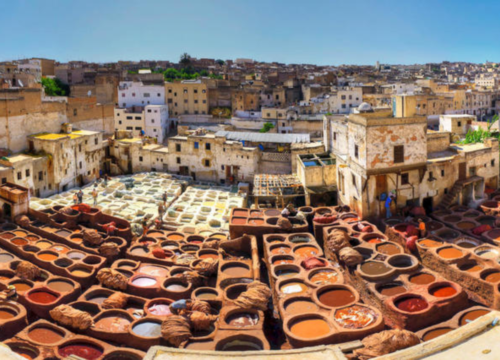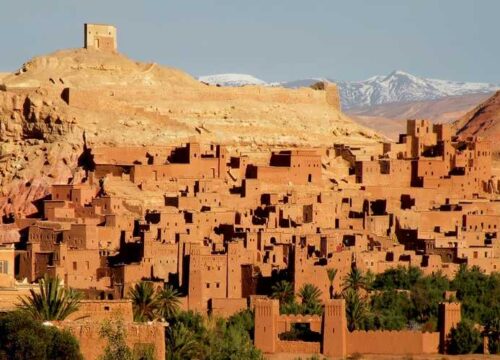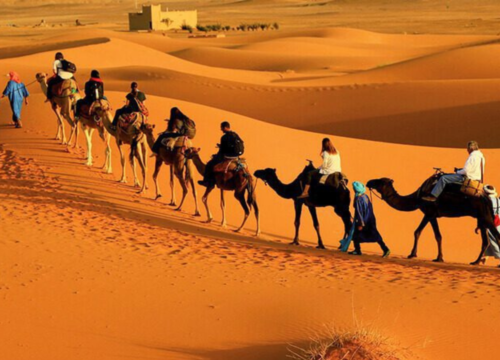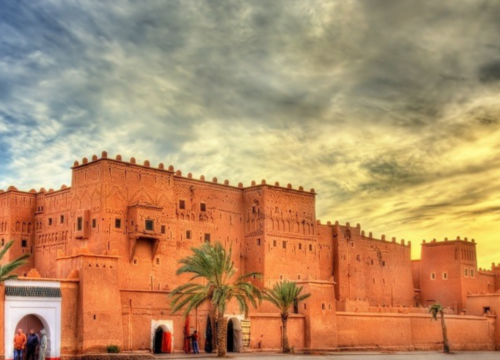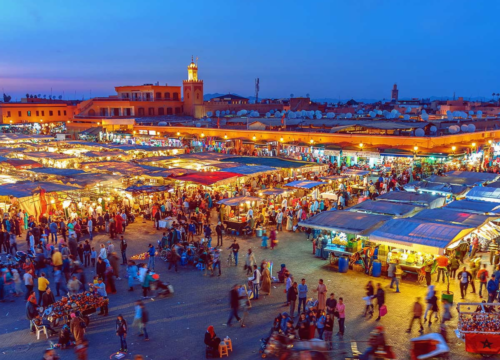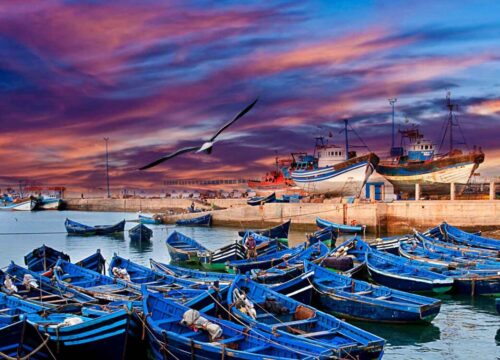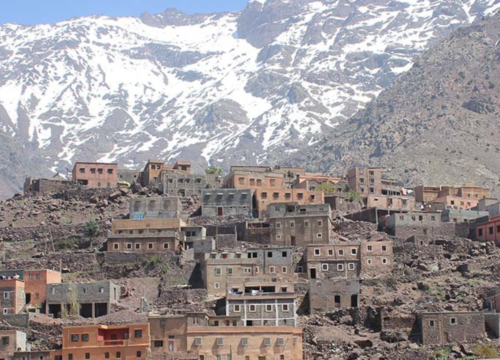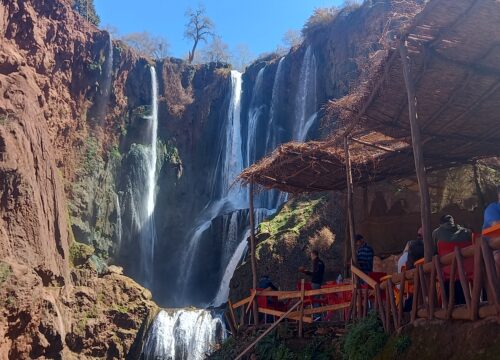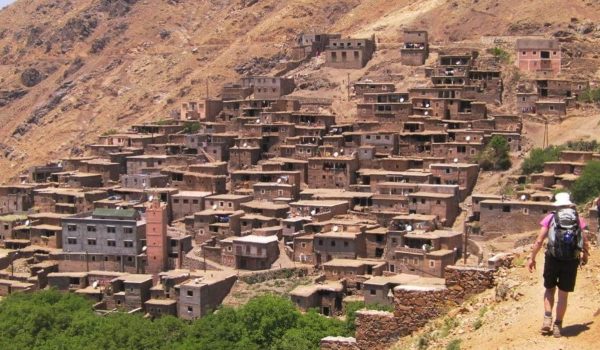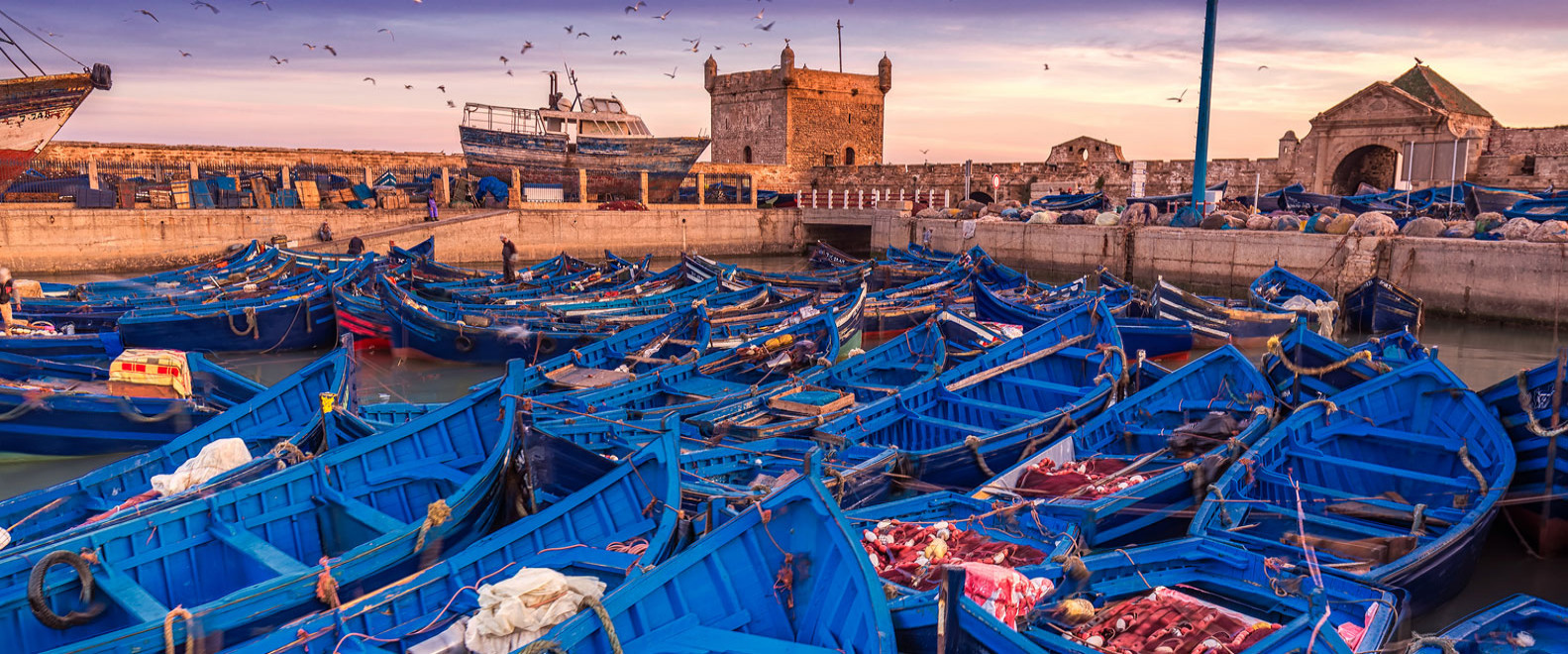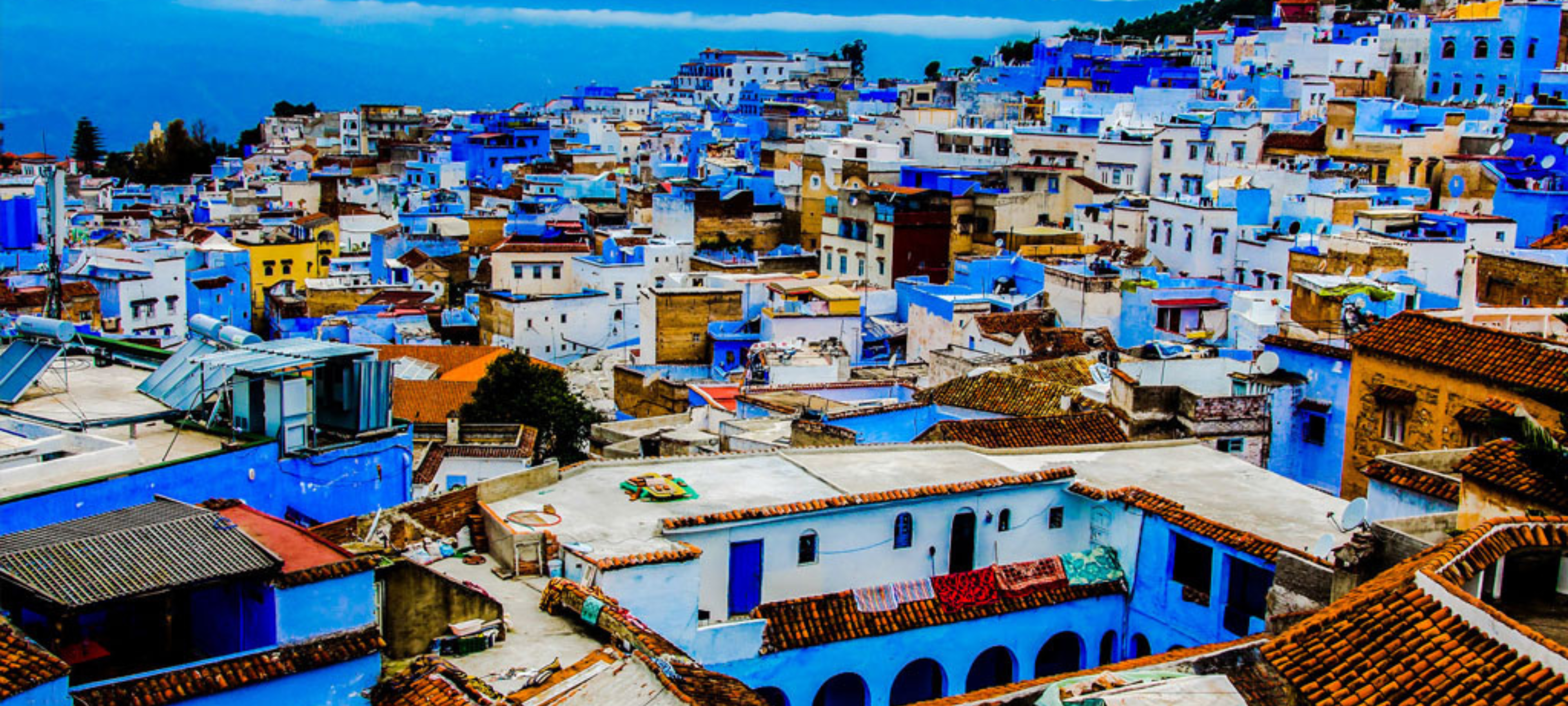9 Days desert tour from Casablanca
From
Duration
Tour Type
Explore Tours
Overview:
This 9 days tour from Casablanca to Marrakech is set to discover almost seventy percent of the most popular Moroccan destinations. We will discover the administrative Capital of Rabat. Then, to the loveliest town of Morocco, Chefchaouen, archeological Roman ruins of Volubilis, and one of the imperial cities, Meknes to another one, Fez. After that, we continue to the various Moroccan world visions in Ifrane city, Cedar forest of Azrou, Midelt which is the capital of apples, then to the Merzouga Sahara Desert. Thence, through Todgha Gorges, fantastic valleys, traditional architecture buildings built with clay and stones, and gorgeous filmmaking sites. Finally, to Marrakech city a with some sightseeing the next day then we drive back to Casablanca.
Infos:
- Duration: 9 days & 8 nights
- Departure: 08:00 am
- Starting Location: Casablanca
- Ending Location: Casablanca
Highlights of 9 Days Desert Tour from Casablanca:
- Pick up from the Aiport or your accommodation.
- Sightseeing in Casablanca.
- Historical monuments of Rabat.
- The blue pearl of Chefchaouen.
- Volubilis and Meknes with Fez monuments.
- Ifrane City and Cedar forest with monkeys wild.
- The Sahara desert with camel rides and desert camp.
- Todgha gorges and Dades with roses Valley.
- Ouarzazate Atlas studio.
- Historical Ait ben Haddou Kasbah.
- High Atlas Mountains.
- Tizi N’tichka with a peak of 2260m over the sea level.
- Woman’s cooperative of Argan oil.
- Marrakech sightseeing.
- Transfer you to Casablanca Airport or Marrakech
Top 14 places to visit in 9 Days tour in Morocco from Casablanca
1. Casablanca Hassan II Mosque: the largest mosque in Africa
If you have the opportunity to visit a charm in Casablanca, let it be the Hassan II mosque. The size of this mosque, located directly on the coast, is completely unlimited.
In addition to being the largest mosque on the planet, its minaret is also the second tallest on Earth. You can barely accept your eyes when you’re in front of her, and this building looks so monstrous. Hassan II Mosque is one of the two mosques in Morocco that non-Muslims can visit.
Tragically, the interior of the mosque must be visited during a guided tour. Guided tours are held regularly at specific times in some dialects. The spoilsport: Meetings are huge. We had 50 people in our community, which greatly influenced our overall vision.
2. Udaya Kasbah of Rabat
Morocco has many beautiful areas of the old town, but the Oudaias Kasbah neighborhood of Rabat should be one of the most picturesque in the country.
It is a quiet and perfectly picturesque area that feels miles from the city while in the heart of the city.
Inside the walls of this ancient fortress, the alleys of white and blue houses surrounded by colorful flower pots and the washing of faucets have an atmosphere lost in time difficult to overcome.
Better yet, unlike the neighborhoods of the old town of Fez and Marrakech, there are almost no other tourists here, so exploring this beautiful corner of the capital gives you the impression of having been let in on a well-kept secret.
3. Chefchaouen blue pearl of Morocco
Located in the Rif Mountains, Chefchaouen – also known as the Blue City is a small town in a huge landscape. Of all the cities in Morocco to visit, it is popular for traveling alone and exploring the city’s famous blue and white painted houses.
The people are also very friendly, so you can definitely enjoy sweet hospitality here which makes it one of the best places to visit in Morocco. Don’t forget to visit the quiet neighborhood of Ras El Maa, one of the most fascinating and secret places to visit in Morocco.
4. Volubilis Roman ruins of Volubilis
The number one ruin of the Roman era of Morocco, and its most famous historical site, is a feast for history lovers.
This site is full of swollen columns and temple remains, remembering that even the greatest empires end up collapsing. The highlight here, however, is the clutch of complex mosaic floors amidst the ruins, which were left on the spot where they were excavated.
The hilltop location allows the ruins to dominate the surrounding countryside, adding the romantic atmosphere of lost glory.
Cross the ruins towards the Capitol and the Forum for a beautiful panoramic view of the site and the surrounding countryside.
Volubilis can be easily visited as a day trip to Meknes or Fez.
5. Meknes City
“One hundred minarets” is one of Morocco’s imperial cities, with an unprecedented number of historical monuments – Bab Mansour, the largest gate in North Africa, the Royal Granary, the Great Gathering House Museum, the Mausoleum of Moulay Ismail, the Christian slave prison and others provide the city with an atmosphere of calm and serenity, with beautiful gardens everywhere, witches, fortunes, snake witches and thinkers showing their talents in the main square.
6. Fes Morocco
Along with Marrakech, Fes is Morocco’s other great cultural destination.
Compared to its sister Imperial City in the south, Fes is much less bourgeois. The medina here (called Fes el Bali) is a maze of narrow streets where it is almost impossible not to get lost.
Among the souks are the tanneries, where the huge tanks of colored dyes are one of the emblematic places of the city.
In addition to the city’s artisanal heritage, the streets of the Souq are full of traditional crafts and the many palaces and monuments hidden in the winding streets, the main attraction of Fes el Bali is simply walking aimlessly through the narrow streets.
7. Merzouga Erg Chebbi desert
For something different, head to the edge of the Saharan sand dunes in an area known as Erg Chebbi.
Here you will find Merzouga, a small town that offers an authentic Bedouin living experience.
The best way to explore the spectacular natural environment of Merzouga is by Camelback or jeep; it is a truly unforgettable experience and one of the best places in Morocco to visit if you want an adventure in the desert.
8. Todgha Gorges, Tinghir
In the eastern massif of the Atlas, the rivers Dades and Todra have dragged with their waters a narrow canyon. Todra Gorge extends along the last 40 kilometers of the river bed. One section of the gorge offers a spectacular spectacle – the gap between the walls of the canyon narrows to 10 meters and the smooth walls of the gorge rise to 160 meters. At the base of the gorge flows a river of ice, which was once a full river, but later turned into a small stream.
9. Dades Valley, Boumalne Dades
What most people look for in the Dades valley is a set of narrow zigzags that rise dramatically from the bottom of the valley to Aït Oufi. Go a little further than the Timzillite Café, where you will have the best possible view of the valley by disappearing in front of you with the road curving downward.
But for us, the highlight of the Dades Valley is the remarkable feature of Monkey Fingers, where streams of water cut streams and cannons to slit into the rock. There is a beautiful view from the Isabel Guesthouse café, right in front of the strange bulbous rock formations. However, the best way to see Monkey Fingers is a 3-hour guided walk.
10. Kasbah of Ait Benhaddou.
This golden adobe Ksar (fortified village) leaves the earth spectacularly in the midst of a landscape that impresses all who visit.
It’s a fairytale place and it’s no surprise that the orange turrets and winding alleys inside have become a favorite filming spot in Hollywood because of the surreal beauty of the place.
You can also sleep at Ksar if you want the full experience of Ait Ben Haddou, although those who like your comfort should be aware that there is no electricity in the building itself.
11. Hollywood of Morocco, Ouarzazate.
Located between the Atlas Mountains and the Sahara Desert, many desert circuits pass from here on the Sahara Road.
The arid and dusty landscape of the region, rich in kasbahs, palaces, and rustic houses, attracts filmmakers from all over the world.
Movies and shows shot on Ouarzazate include Gladiator, Game of Thrones, Ben Hur, Mummy, The Hills Have Eyes and Kingdom of Heaven.
12. High Atlas Mountains.
The High Atlas Mountains are dotted with Berber villages where small crops are maintained by farm animals and women who work long, exhausting days. It is a privilege to attend this traditional lifestyle, and where to go in Morocco for Berber hospitality and spectacular landscapes.
13. Tizi N’tichka curves 2260m
Tizi N’Tichka is a high mountain port at an altitude of 2,260m (7,257ft) above sea level, located in Morocco. Tizi n’Tichka means «difficult alpine grass» in Berber and you will understand why.
14. Red City, Marrakech Morocco
It is the most popular of the lot and probably its gateway into the desire to see even more from Morocco.
Visiting the best places in Marrakech is like an attack on the senses; it is vibrant, colorful, historical, and absolutely amazing to visit.
FAQ
How far is the desert from Casablanca?
The Moroccan Sahara is about 700 kilometers (435 miles) south of Casablanca, and it can be reached by car or by taking a bus or a train from the city. The journey by car from Casablanca to the Moroccan Sahara takes about 10-12 hours, depending on the route you take and the mode of transportation.
What is the best month to do 9 Days Tour in Morocco?
The best time to visit Morocco for a 9 days tour will depend on your personal preferences and the type of experience you are looking for. Morocco has a diverse climate, and the weather can vary considerably by region and time of year.
Here are some elements to consider when deciding the best time to visit Morocco:
Temperature: Morocco has a Mediterranean climate along the coast, with warm and dry summers and mild and humid winters. The temperature inside the country can be extreme, with hot and dry summers and cold and humid winters. The best time to visit Morocco if you want to avoid warmer temperatures is in spring (March to May) or in autumn (September to November).
Precipitation: Rainfall in Morocco is generally low, but varies by region. Coastal regions tend to be wetter than inland, and the winter months (November to February) are the wettest time of the year. If you want to avoid the rain, the best time to visit Morocco is summer (June to August) or autumn (September to November).
Festivals and events: Morocco is a culturally rich country, and there are many festivals and events that take place throughout the year. If you are interested in experiencing some of the local cultures, you can plan your trip around one of these events. Popular festivals and events in Morocco include the Marrakech International Film Festival (November), the Fes Festival of Sacred World Music (June), and the Desert Festival (January).
Ultimately, the best time to visit Morocco will depend on your personal preferences and the type of experience you are looking for. It is a good idea to investigate weather and cultural events in advance and plan your trip accordingly.
Included/Exclude
- Pick up & Drop off at your accommodation or Airport.
- Private comfortable 4×4 vehicle or minibus with A/C.
- Vehicle Fuel.
- Professional guide/driver who speaks your language.
- Local guide in Fes.
- 7 accommodations with breakfast include.
- 1 night in Sahara desert camp with dinner and breakfast. Private bathroom and shower at the camp. Berber music in the desert. Camel rides for each person. Mint tea at the desert camp.
- Sandboarding in the dunes (optional).
- Transfer by 4x4 car back from the desert camp.
- Flexibility to stop whenever and wherever you want.
- Stop to enjoy panoramic views and have free time to eat.
- 2 Dinners in Merzouga, Dades valley.
- Visit the woman's cooperative of Argan oil.
- Local guide in Marrakech for the historical monuments
- Drinks, Lunches.
- Fees to enter some monuments.
- Dinner in Rabat, Chefchaouen, Fes, Marrakech.
- Flight tickets.
Tour Plan
Your first day of the 9 days tour from Casablanca starts with your pick up from the airport or your hotel and starts exploring sightseeing in Casablanca, starting from the Hassan II mosque which is the largest mosque in Africa and the third one in the Arab world, built-in 1993. After that, we head to the city of Rabat and explore the Oudaya kasbah, the coastal and fortified kasbah that was built by the Moorish family in the 17th. Then, to the Hassan tower, the mosque was uncomplicated from the 12th century. You can also visit other places if time permits, such as Challah and the Royal Palace. spend the night in a hotel/riad.
In the morning after your breakfast, we continue our Morocco journey to the Blue city pearl, through the amazing landscapes of Berber villages to contemplate. then we will have lunch on our way to Chefchaouen city, after that, we will drive through the Rif mountains and some zigzags with the valleys, in the afternoon we will get to Chefchaouen, you will have time to walk around the city after you take a rest in your hotel, and spend a magical night there.
After breakfast, we will drive to Fez through the ancient Roman ruins of Volubilis. It is well preserved because it is recognized as a world heritage site by UNESCO. It has many beautiful mosaics scattered here and there, with ancient pillars and arches. After a walk among the ruins, We drive 30 km to visit Meknes. The city is considered the Ismaelite capital and one of the imperial cities. Where we visit Bab Al-Mansour, Sahrij Souani basin, the royal stables, and the barn. And also the Moulay Ismail Mausoleum. Then we head to Fes. Accommodation in a riad/hotel.
In the morning, one of the local guides of Fes will come to your accommodation in the morning to come with you and explore the cultural Fes. To begin, you will visit the king’s palace and the Jewish quarter, El Mellah. Then we will visit a Borj, a place above Fes to take a look at the city.
Then we will take you to the Blue Gate, the main gate of the medina. There are two main streets, one street, and one return. These two streets are in the market or souks of Fes. In addition, on one of the streets, there is the University of al-Qarawiyyin, the oldest extant. In addition, there are tanneries, where they make leather. Not forgetting the visit of Fez ceramics, an exceptional art of the village of Fez.
After breakfast, we drive south via Imouzzer Kander to visit Ifrane. The city is famous for its low temperature, snow, and alpine-style architectural houses. No wonder it is called the Swiss of Morocco. After that, we continue in the cedar forest, where live the Barbary macaques. Feel free to feed them as they wander through the forest. Later, we will continue to Midelt, where we will have free time for lunch. Then we drive to Merzouga via the Tizi-n-Tilghmt pass and along the Ziz valley. With stops for panoramic views.
In the afternoon we arrive at the Sahara desert of Merzouga, where we pass by camels and cross the sandy desert. Stop at the top of a dune to enjoy the sunset. Finally, continue to the camp. It is a combination of traditional nomadic tents and the luxury of a hotel. Where you can enjoy the music of Berber drums, while dancing around the fire, under the vast open sky of the stars. Dinner and overnight at the desert camp.
Today you will wake up early to see the beautiful sunrise on the incredible sand dunes of Erg Chebbi, and you will take breakfast and a camel or 4×4 ride back to your driver in Merzouga, Then you will drive to Rissani to visit its traditional market considered the largest in all of southern Morocco.
After that, you will leave for the gorges of Todra, which is the highest and narrowest gorge in Morocco, and walk along its beautiful canyon, lunch will be in a restaurant overlooking the valley. After lunch, you will continue the day in the direction of the Dades valley, where you will see the majestic sand castles and the incredible rock formations known as “finger monkeys”. The night will be spent in a hotel or riad overlooking the beautiful Dades valley.
In the morning you will leave the gorges of Dades for Marrakech. However, before going to Marrakech, you will explore the best of the Dades valley.
Then you will travel through the road to Thousand Kasbahs and take a break to visit Kalaat M’Gouna (Valley of Roses) in this amazing place you will be able to discover rose products, every year the Rose Festival takes place in May.
Then you will visit the Ouarzazate film studio, where famous films were shot. the city called Hollywood of Morocco and the studio called Atlas Studio. Visit the Kasbah of Ait Benhaddou, a stop for caravans in the past, and the stage for the shooting of many international films today.
Lunch will be in a local restaurant while you enjoy the scenery of the Valley and the Kasbah. Finally, continue the road through Tizi N’Tichka 2260m to Marrakech, enjoying stunning views of the valleys, mountains, and many Berber villages nearby. At noon, you will be left in your accommodation in Marrakech.
Today is the discovery of Marrakech, one of the imperial cities, historical monuments, and cultural modes. Our local guide will come to you to your accommodation. You will begin to stroll through the historic center of Marrakech and its narrow streets decorated with Moroccan ceramics and local green objects. Then visit historical sites; The oldest mosque in Marrakech, al-Kattabiyah mosque “From 1158,” Saadi Tombs “from 1557,” Bahia Palace “from 1912, and then visit Jamaa al Fna square.
In the afternoon, your driver and local guide will take you to visit the park of Majorelle and cross the new part of Marrakech, Gilliz. In addition, you will have your free time. Finally, we finished this day of 9 days tour from Casablanca.
Depending on your departure time, the driver will pick you up from your accommodation and transfer you to Marrakech’s airport or Casablanca’s airport.
Make Reservation
Related Tours
Review Scores
Make Reservation
Booking Tour
Latest news & articles from the blog
Trekking in Imlil: A Gateway to the High Atlas Mountains and
Read More »
Located on the Atlantic coast of Morocco, Essaouira is a charming
Read More »
Tucked away in the heart of northern Morocco, Chefchaouen is a
Read More »
